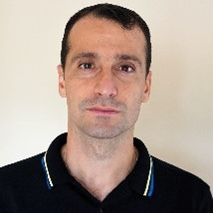Advances in Physical Fitness Profile in Soccer Players
A special issue of Sports (ISSN 2075-4663).
Deadline for manuscript submissions: closed (31 December 2023) | Viewed by 18678
Special Issue Editor
Interests: soccer; football; performance; fitness; training
Special Issues, Collections and Topics in MDPI journals
Special Issue Information
Dear Colleagues,
Soccer is an intermittent-type sport which incorporates actions with low and high intensity and duration. In elite soccer, players typically cover distances of around 10–13 km during a single match. However, high-intensity running only represents approximately 10% of the total distance covered during a soccer match. On top of this, soccer players perform an incredibly varied range of activities in a match, such as accelerations, decelerations, jumps, and changes of direction, running into the 1000s. Thus, a decent level of aerobic and anaerobic fitness is crucial for the success of a player. In recent decades, fitness in modern soccer has improved, as evidenced in the marked increase in intensity during a match. This development is linked both to the methods applied during the training process and the use of technology such as GPS.
This Special Issue offers the opportunity to publish high-quality original papers, systematic review papers, and meta-analyses focused on the development of soccer fitness in both young athletes and adults. We are particularly interested in the following research topics: modern training methods to improve fitness, use of technology such as GPS to improve performance, and the use of training load to improve fitness.
Dr. Ioannis Michailidis
Guest Editor
Manuscript Submission Information
Manuscripts should be submitted online at www.mdpi.com by registering and logging in to this website. Once you are registered, click here to go to the submission form. Manuscripts can be submitted until the deadline. All submissions that pass pre-check are peer-reviewed. Accepted papers will be published continuously in the journal (as soon as accepted) and will be listed together on the special issue website. Research articles, review articles as well as short communications are invited. For planned papers, a title and short abstract (about 100 words) can be sent to the Editorial Office for announcement on this website.
Submitted manuscripts should not have been published previously, nor be under consideration for publication elsewhere (except conference proceedings papers). All manuscripts are thoroughly refereed through a single-blind peer-review process. A guide for authors and other relevant information for submission of manuscripts is available on the Instructions for Authors page. Sports is an international peer-reviewed open access monthly journal published by MDPI.
Please visit the Instructions for Authors page before submitting a manuscript. The Article Processing Charge (APC) for publication in this open access journal is 1800 CHF (Swiss Francs). Submitted papers should be well formatted and use good English. Authors may use MDPI's English editing service prior to publication or during author revisions.
Keywords
- soccer
- football
- fitness
- physical condition
- training load
- GPS
- fitness profile
- running profile






